|
When buying a camera, one needs to first figure out it's intended use. If the purpose is simply for pictures of the family, vacations, just to record events, etc., you can probably do with a point-n-shoot. If you want the versatility of changing lenses and the ability to be more creative, a DSLR may be in order. In either case, the two most important things are: will the camera do what you want, and is it comfortable to hold and use the controls. If it is not comfortable to hold and use, it will wind up spending more time on the shelf or in the closet than out taking photos. Too small, too big, and awkward controls will definitely have an affect on how much you use the camera. It has to be a good fit. I would highly suggest holding and using several models before making a decision. Best brand? Well, that will ALWAYS be up for debate! Canon, Nikon, and Sony are good. I've not seen images from Pentax DSLRs, but their SLRs were great. |
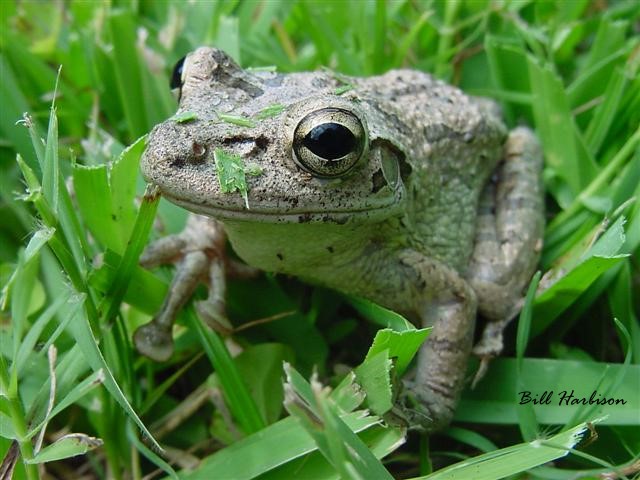
I was mowing the lawn in Florida one time and saw this fellow. I missed him with the mower. I ran in and got the camera, a Sony Mavica. |
|
Obviously, the more pixels in a sensor, the more defined the photograph will be, and the larger it can be printed before getting fuzzy, or pixelated. Most cameras now have sensors of sufficient size (6+ megapixels) to make really nice 8x10s. But if you want to take a portion of the image and blow it up, you might want to consider a large pixel count sensor. A camera that saves RAW images will afford you more control over how the image looks by being able to tweak settings in the software that comes with the camera. But RAW files come at a price. They are large, and may limit your camera to taking two or three shots in sucession, then having to wait until the camera has saved the images before taking the next shot. (Mine is three. If I really want to shoot a lot in sucession (burst), I will turn RAW off temporarily). |
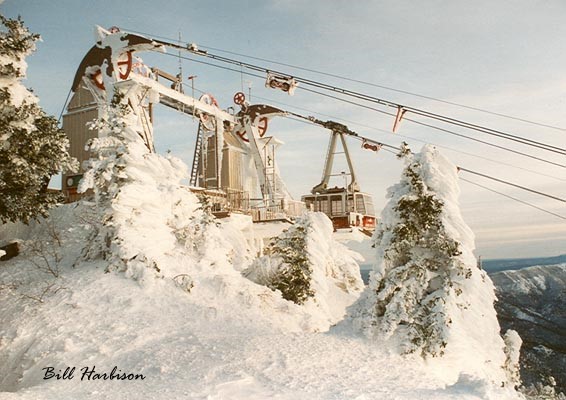
Sandia Peak is about 6,000 feet above Albuquerque, and Albuquerque is around 5,000 feet above sea level. Sandia Peak is about 10,500 feet above sea level. I lived at sea level. Talk about getting winded easily!
|
|
How many lenses, and what type? Yes. It seems like one can never own too many lenses. Get the best quality lens that you can afford, as that is what is creating the image on the sensor. Zooms are good for cropping in-camera (composition) and getting "closer" to subjects that otherwise might not be easy. But, most zooms will usually have a smaller aperture that a fixed length lens. This means that they may not be as good in lower light conditions. There are always trade-offs. That's why some people get many lenses, it depends on what you are trying to achieve with the shot. For my Canon T1i, I have an 18-55 zoom, a 55-250 zoom, an 18-200 zoom, and a 50mm fixed (it has a wider aperture, f/1.4, to let in more light). The 18-55 and 55-250 were kit lenses that came with the camera. The 18-200 is a Sigma, which I use as my walk around lens. The two kit lenses don't get out much. |
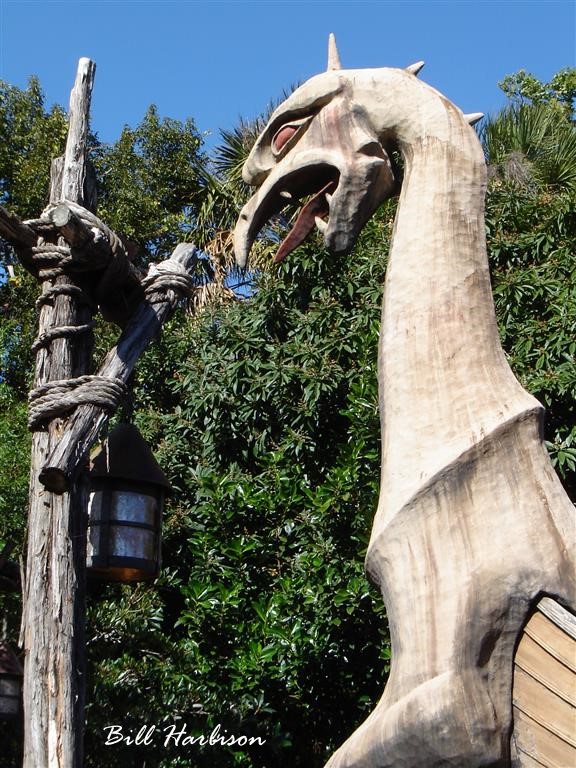
I thought this was a neat shot of the font of a boat in the Norway area of EPCOT. |
|
So, what to take pictures of? Things you like. You'll get better results with photos of things for which you have affection. Scenery and landscapes? Historic buildings or locations? Animals or plants? Trains, planes, or boats? Bugs? (You'll need a macro lens or extension tubes for them!) Whatever the subject, just remember the basic guidelines of composition. Also, try looking at your subject from another aspect. Get in close, use a high or low angle, and look for patterns. Sure, your friends may not like everything you take a photo of, but you're doing it for you, right? If you're doing it for someone else, yea, you have to take photos of something that has meaning to them. Experiment. Speaking of experimenting, when you get a new camera, read the book from cover to cover. Become familiar with all of the buttons and options on your camera, then read the book again. Then, take your camera and shoot anything and everything, just to see how the camera responds. (You can always delete the images.) Investigate "If I do this, what happens?". You want to get to a point where you and your camera work together, and you know how to use it to accomplish what you want with it. The newer cameras have so many capabilities compared to the SLRs that I grew up with. It was a few months before I found out I could set my camera for back button focusing. |
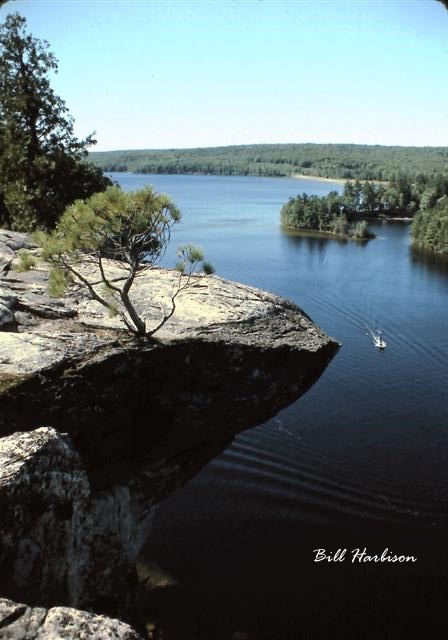
The nickname for the formation in Bon Echo Provincial Park in Ontario is "The Rock". This is a view of Mazinaw Lake from the edge of the top of the Rock. It's about 300 feet above the water. Before I arrived at where I took this shot, I was standing a little to the right of that little tree, not knowing that there was nothing under it. |
|
Acessories? You bet! I don't know of too many people who wouldn't want more accessories! Battery grip, angle finder, polarizer and star filters, remote release, ... . The list goes on, but a good tripod is a must. Of course how "involved" you get would depend on your level of interest. Some people will be quite content with the camera and minimal accessories. Me? The photography bug bit hard! To keep your gear light if you have a lot of accessories, you'll get to a point where you have to be selective on what you carry when you go out. Will I need this on this trip? For trips where there will be a lot of hiking, like the carriage roads in Acadia, you'll want a back pack, a photography back pack (They're compartmentalized). They are SO much more comfortable to carry for a long time than a regular camera bag, especially if it has a chest strap. They also come in various sizes depending on how much stuff you want to take with you. But you will want to be as light as possible. |
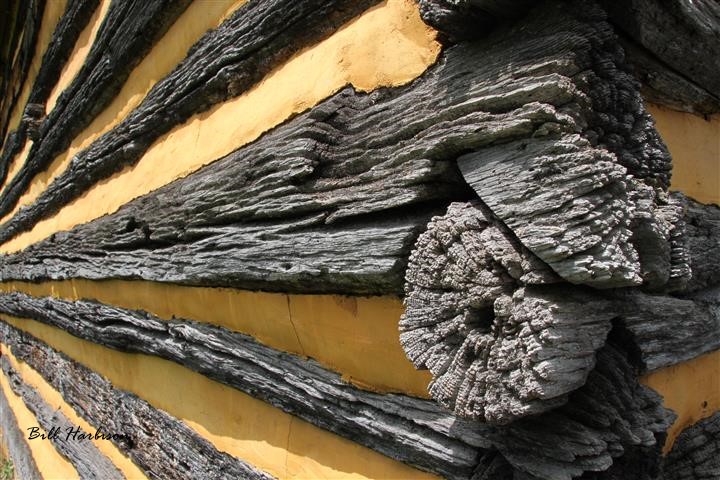
A different view of a log cabin at Daniel Boone Homestead in Pennsylvania. Sometimes looking at something differently will give you a unique image. |
|
Camera envy? Yea, we all have it at some point. TRY to get over it! (I'd like a 5D Mk IV with a 24-105L lens, but it just isn't in the budget.) The real down side of camera envy is that it can make you feel inferior as a photographer. If you see someone that has a "better" setup than you, it could make you feel, well, like you have a toy. Try not to let it get the best of you. I bought a T1i, and within three years, the T5i was out. So? You still have a camera. Learn how to use your camera to the best of your (and its) ability. You will be VERY surprised what you can do with what you have. I saw a post on a blog one time where a (newbie) photographer stopped along the road to take a photo. Along came this guy that pulled over, pulled out a high end rig, said "Hi", and proceeded to take pictures, also from the same vantage point. I couldn't help but think, that even with his expensive equipment, he didn't know what he was doing. He just saw the other person taking a photo, and thought he was going to miss something, so he got out to take one too. He probably thought that the person already there knew what they were doing, and had to get in on the "shot". That happens a lot. Usually people with point-n-shoots following people with "professional" cameras. It's difficult, but once you get over camera envy, you'll enjoy shooting much more! (However, there is nothing wrong with moving up at a later time. Just don't worry about it now!) Just get good at using what you have. |
This is a view from Thunder Hole in Acadia National Park. There is not a lot of coast that does not have rocks. Sand Beach is one area, but it is not very large. Salsbury Cove is a little village on the north end of Mount Desert Island. It even has a post office! |
|
|
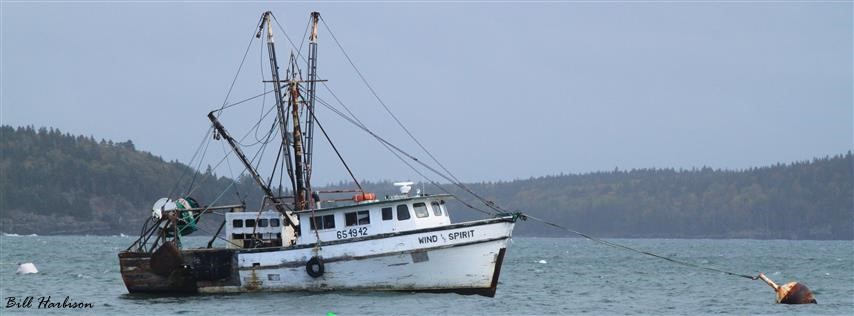
This boat was moored just off of Bar Harbor in Frenchman Bay.
Yes, it was a little windy that day.
▲ TOP ▲
{ 48 }
All images © Bill Harbison - All rights reserved